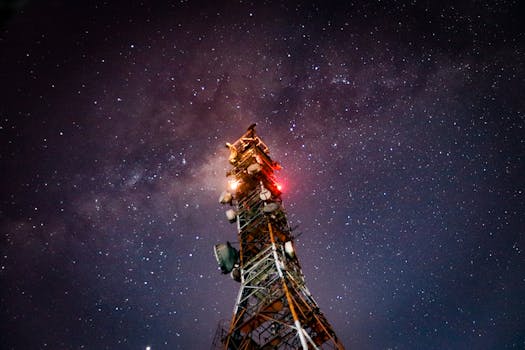
MEO Satellites: Revolutionizing Global Communication with Medium Earth Orbit Technology
MEO satellites, or Medium Earth Orbit satellites, are a type of satellite that operates in an orbit between 2,000 and 36,000 kilometers above the Earth’s surface. This orbit is higher than Low Earth Orbit (LEO) satellites but lower than Geostationary Orbit (GEO) satellites. MEO satellites are designed to provide a range of services, including navigation, communication, and Earth observation.
One of the key benefits of MEO satellites is their ability to provide global coverage with a smaller number of satellites than GEO satellites. This is because MEO satellites have a larger footprint on the Earth’s surface, allowing them to cover a wider area with a single satellite. Additionally, MEO satellites have a lower latency than GEO satellites, which means that they can provide faster and more reliable connections.
How MEO Satellites Work
MEO satellites work by using a network of satellites in medium Earth orbit to provide a range of services. Each satellite is equipped with a range of instruments and antennas that allow it to communicate with Earth-based stations and other satellites. The satellites use a combination of radio frequencies and optical signals to transmit data, which is then relayed to the ground or to other satellites.
MEO satellites are often used for navigation purposes, providing location information and timing signals to GPS receivers on the ground. They are also used for communication purposes, providing broadband internet access and other telecommunications services to remote or underserved areas. Additionally, MEO satellites are used for Earth observation, providing high-resolution images of the Earth’s surface and monitoring environmental conditions such as weather patterns and ocean currents.
Benefits of MEO Satellites
MEO satellites offer a range of benefits, including global coverage, low latency, and high capacity. They are also more resistant to interference and jamming than GEO satellites, making them a more secure option for critical communications. Additionally, MEO satellites have a longer lifespan than LEO satellites, which means that they can remain in orbit for up to 15 years or more, reducing the need for frequent replacement and maintenance.
MEO satellites are also more cost-effective than traditional satellite systems, as they require fewer satellites to provide global coverage. This makes them an attractive option for companies and organizations looking to provide global communication services. Furthermore, MEO satellites can provide a range of services, including broadband internet access, voice and video communications, and data transfer, making them a versatile and valuable asset for a range of industries.
Challenges and Future Developments
Despite the many benefits of MEO satellites, there are also several challenges that must be addressed. One of the main challenges is the risk of interference and collision with other satellites and space debris. To mitigate this risk, satellite operators must carefully plan and coordinate the launch and operation of their satellites, as well as implement collision avoidance systems and other safety measures.
Another challenge facing MEO satellites is the need for advanced technology and infrastructure to support their operation. This includes the development of sophisticated antennas and transceivers, as well as advanced signal processing and routing systems. Additionally, MEO satellites require a high degree of autonomy and redundancy, as they must be able to operate independently for extended periods of time and withstand the harsh conditions of space.
Despite these challenges, the future of MEO satellites looks bright. With the increasing demand for global communication services and the growing need for reliable and secure connectivity, MEO satellites are likely to play an increasingly important role in the future of satellite technology. As the technology continues to evolve and improve, we can expect to see even more innovative applications and services being developed, from advanced navigation and Earth observation systems to new forms of communication and data transfer.




